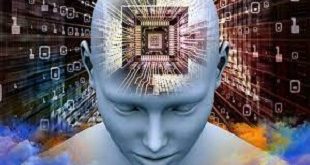Introduction:
In an era marked by rapid technological advancements, the realm of secure identification has undergone a revolutionary transformation through the adoption of biometric technologies. From the distinctive patterns of our fingerprints to the unique features of our irises, biometrics harness the power of individuality for robust identification and authentication. This article delves into the multifaceted world of biometric technologies, tracing their evolution, exploring their diverse applications, addressing challenges, and envisioning the future trends that will shape the landscape of secure identification.
Origins and Evolution:
Inception of Biometric Recognition:
Biometric identification traces its roots back to ancient civilizations, where unique physical features were used as signatures or marks of identity. However, the formal development of biometric technologies began in the late 19th century, with the classification of fingerprints by Sir Francis Galton. This laid the foundation for a scientific approach to personal identification.
Advancements in the 20th Century:
The 20th century witnessed the refinement and expansion of biometric technologies. Handwriting analysis, voice recognition, and facial measurements became subjects of study. The emergence of computers in the latter half of the century set the stage for automated biometric recognition systems.
Introduction of Automated Systems:
The 1970s marked a pivotal moment with the advent of automated fingerprint identification systems (AFIS). This technological leap enabled the rapid and accurate matching of fingerprints, greatly enhancing the efficiency of criminal investigations. As computers became more powerful, biometric technologies diversified to include facial recognition, hand geometry, and iris scanning.
Types of Biometric Technologies:
1. Fingerprint Recognition:
Fingerprint recognition, perhaps the most well-known biometric method, relies on the unique patterns of ridges and valleys on an individual’s fingertips. Automated systems capture and analyze these patterns for accurate identification.
2. Facial Recognition:
Facial recognition technology maps and analyzes unique facial features, such as the distance between eyes or the shape of the nose. Widely used in security systems, it has also become a key feature in smartphones and social media platforms.
3. Iris Recognition:
Iris recognition involves capturing the intricate patterns in the colored part of the eye. The distinctive characteristics of the iris make this method highly accurate and secure, leading to applications in access control and national identification programs.
4. Voice Recognition:
Voice recognition analyzes the distinct characteristics of an individual’s voice, including pitch, tone, and speech patterns. Used in various applications, it enables hands-free control of devices and secure telephone-based authentication.
5. Retina Scanning:
Retina scanning captures the unique patterns of blood vessels at the back of the eye. While highly accurate, its use is limited due to the need for close and intrusive proximity to the scanning device.
6. Hand Geometry Recognition:
Hand geometry recognition analyzes the size and shape of an individual’s hand. This method is often employed in physical access control systems, where a hand scan grants or denies entry.
7. Behavioral Biometrics:
Behavioral biometrics focus on unique patterns in an individual’s behavior. This includes keystroke dynamics, signature dynamics, and gait analysis. These traits add an extra layer of personalization to identification methods.
Applications Across Industries:
1. Access Control:
Biometrics have become integral to access control systems, securing physical spaces such as offices, data centers, and high-security facilities. Fingerprint and iris recognition are commonly used in this context.
2. Identity Verification:
Biometric technologies play a crucial role in identity verification, particularly in border control, law enforcement, and immigration. The accuracy and speed of biometric systems aid in swift and reliable identification.
3. Smartphones and Devices:
Fingerprint and facial recognition have become standard features in smartphones, offering users a secure and convenient way to unlock their devices and authorize transactions.
4. Financial Transactions:
Biometrics enhance security in financial transactions. Fingerprint or facial recognition is commonly used in mobile banking apps, and voice recognition may be employed for phone-based transactions.
5. Healthcare:
Biometric technologies are making inroads in healthcare for patient identification and securing medical records. Iris scanning and fingerprint recognition contribute to accurate and secure identification of individuals in a healthcare setting.
6. Time and Attendance Systems:
In corporate settings, biometric time and attendance systems track employee attendance, prevent time fraud, and streamline payroll processes.
7. National Identification Programs:
Several countries have implemented biometric technologies in national identification programs, providing citizens with secure and unique identification. This has applications in voting, social services, and law enforcement.
Challenges and Considerations:
1. Privacy Concerns:
The collection and storage of biometric data raise significant privacy concerns. Protecting this sensitive information from unauthorized access or misuse is paramount to building public trust.
2. Accuracy and Reliability:
The accuracy of biometric systems can be influenced by various factors, including environmental conditions, changes in physical traits over time, and the quality of the capture device.
3. Interoperability:
Interoperability between different biometric systems and standards is essential for seamless integration into various applications and industries. A lack of standardization can hinder widespread adoption.
4. Security:
While biometrics offer strong authentication, they are not immune to hacking attempts. Ensuring the security of biometric databases and communication channels is critical to prevent unauthorized access and data breaches.
Future Trends:
1. Multi-Modal Biometrics:
Combining multiple biometric methods, known as multi-modal biometrics, is a trend that enhances security and accuracy by using a combination of traits for identification.
2. Continuous Authentication:
The concept of continuous authentication involves monitoring and verifying an individual’s identity throughout an entire session or interaction, rather than just at the point of entry.
3. Biometrics in Wearables:
The integration of biometric technologies into wearable devices is a growing trend. Wearables can continuously monitor biometric data for various purposes, including health tracking and security.
4. Advancements in Behavioral Biometrics:
Ongoing research and development are focusing on analyzing and leveraging behavioral biometrics for authentication. This includes keystroke dynamics, mouse usage patterns, and even behavioral biometrics in augmented reality environments.
Conclusion:
Biometric technologies have evolved from historical practices of personal identification to cutting-edge, automated systems that redefine security and convenience. The journey from fingerprints to iris scans, from handwriting analysis to facial recognition, exemplifies the dynamic nature of this field.
As we navigate the intricacies of privacy concerns, accuracy challenges, and security considerations, it is clear that biometric technologies are here to stay. The ongoing convergence of biometrics with other emerging technologies, such as artificial intelligence and wearable devices, promises a future where secure identification is not only efficient but also seamlessly integrated into our daily lives.
In unraveling the future of secure identification, biometric technologies stand as a testament to the remarkable intersection of science, technology, and individuality. As we embrace the potential of these technologies, it is essential to tread carefully, balancing innovation with ethical considerations, to ensure a future where secure identification is not only technologically advanced but also respectful of individual privacy and societal values.


